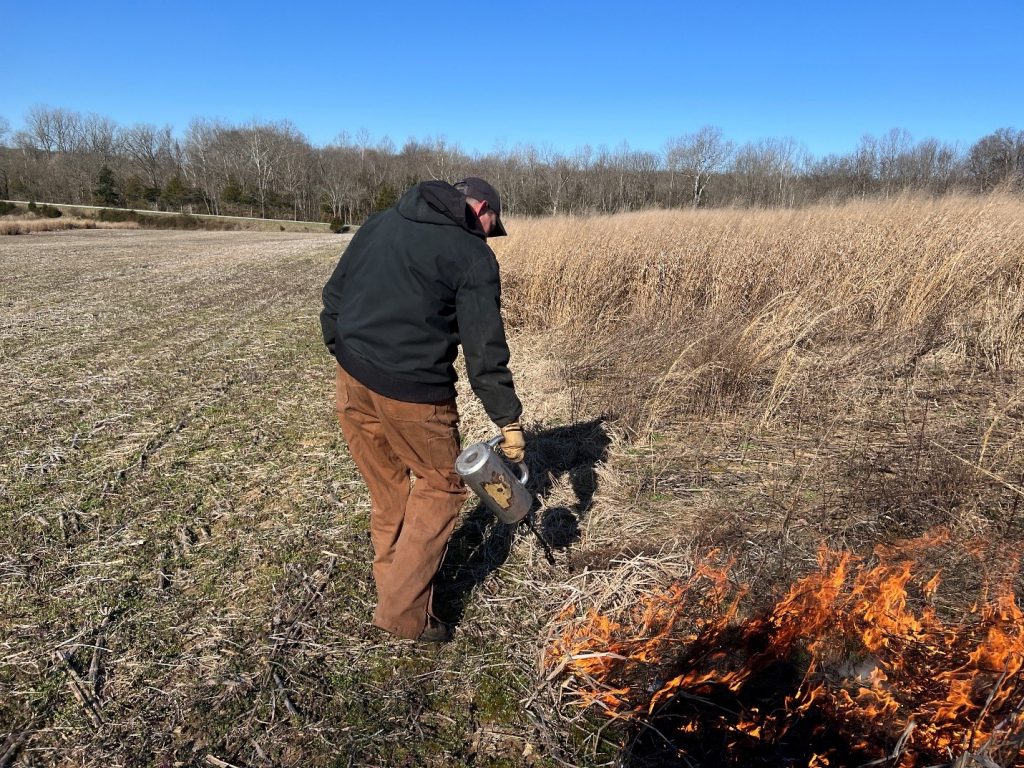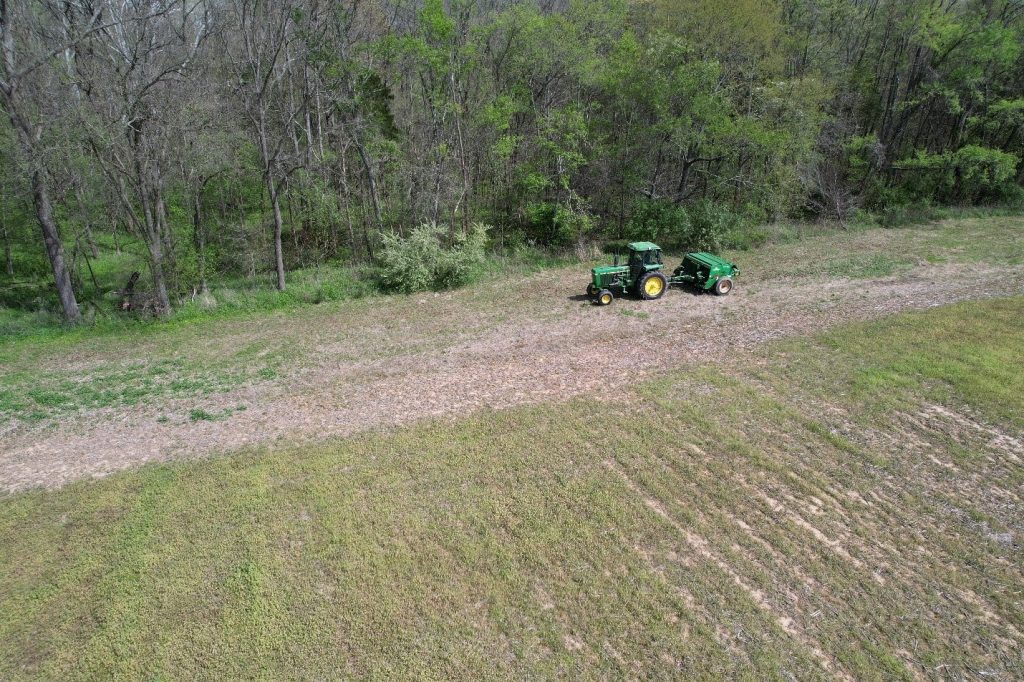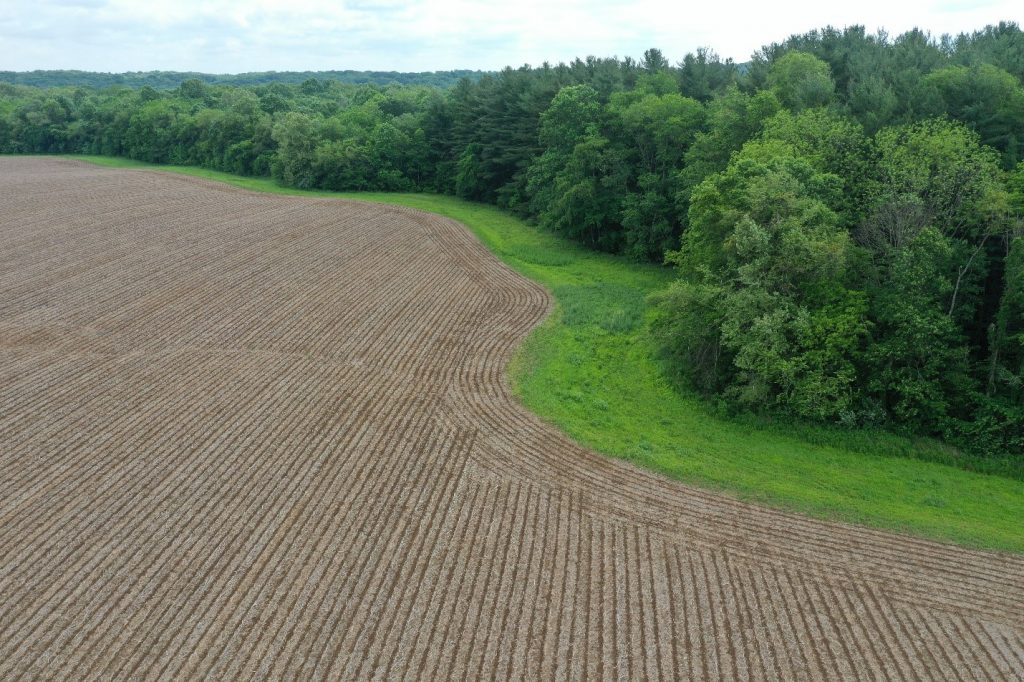Integrating Conservation and Agriculture
EDGEFIELD, S.C. — In a significant step toward integrating wildlife conservation into modern farming practices, the Indiana NWTF State Chapter has partnered with Purdue University to establish a Wildlife-Friendly Farming Demonstration Area at the Southeast Purdue Agricultural Center in Butlerville, Indiana. The Indiana NWTF State Chapter provided over $9,000 to support this innovative project, which began in the spring of 2024. The funding is crucial for acquiring equipment such as wildlife acoustic monitoring recorders and prescribed fire tools, essential for enhancing and maintaining wild turkey habitats and other wildlife in agricultural settings.
“Myself and the Indiana State Board were really excited when reviewing this project proposal due to the vast number of objectives being met,” said Ryan Boyer, NWTF district biologist for Indiana, Michigan and Ohio. “We recognize here in Indiana that roughly 97% of land is privately owned, and in order to effectively move the needle on managing for wild turkeys, we need to find a way to impact private lands. This project and the future education and outreach opportunities are extremely valuable to landowners learning how to manage their lands for wild turkeys and wildlife benefits and for balancing the interface between agriculture and wildlife.”
While many wildlife species can thrive in agricultural ecosystems, modern farming practices, such as farming from fencerow to fencerow and using large fields, can displace wildlife by eliminating permanent vegetation. The demonstration area aims to combat these effects by implementing various conservation practices that foster early successional plant communities, which provide critical habitat for species like the Eastern wild turkeys, northern bobwhite quail, white-tailed deer, and various grassland and shrubland songbirds.
The project encompasses 16 acres within and surrounding a 90-acre crop field, designed to illustrate how conservation measures can be effectively integrated into active farming without compromising productivity. This spring, existing prairie and filter strips were treated with prescribed fire to rejuvenate native plants, while in-field strips were planted with switchgrass to provide wildlife habitat, improve water filtration and reduce erosion. Additionally, a mix of native grasses and forbs were planted as a buffer around the agricultural field.


Looking ahead, herbicide applications are scheduled for this fall to prepare the field for planting in spring 2025. A site for edge feathering—a method to create transitional habitat—was also scouted, with mechanical work planned for winter 2024-2025.
The benefits of these conservation efforts are already evident. This past summer, several wild turkey hens and their poults were observed using the newly established field borders.

The Wildlife-Friendly Farming Demonstration Area is driven by several key goals:
- Showcase Conservation Practices: Provide landowners and agricultural producers with practical examples of how they can implement conservation practices on their land to benefit wildlife.
- Set Realistic Expectations: Offer landowners and producers realistic expectations about the implementation, management and costs associated with these practices.
- Demonstrate Agricultural Benefits: Show how conservation practices can affect crop yield and profits, highlighting the benefits of utilizing unproductive acres for habitat restoration.
- Assess Wildlife Impact: Demonstrate the positive impact of conservation practices on wildlife populations, particularly species that benefit from early successional habitats.
These practices will not only benefit wildlife but also help reduce soil erosion, improve water quality and optimize productivity by focusing efforts on less fertile areas of the farm.
With the help of wildlife acoustic monitoring recorders funded by the Indiana NWTF State Chapter, Purdue staff and a Wildlife Extension Intern will conduct vegetation surveys and monitor bird species diversity in the demonstration area. This research will allow for the comparison of biodiversity between treated areas and nearby untreated fields, providing valuable insights into the benefits of wildlife-friendly farming practices. Ongoing maintenance of the demonstration area, including prescribed burns and selective herbicide applications, will ensure the sustainability of these habitat improvements over the long term.
The Wildlife-Friendly Farming Demonstration Area will also serve as a key educational tool for farmers, conservation professionals and the public. Purdue University and its partners plan to use the area for multiple outreach events, including the annual SEPAC Field Day, which attracts over 100 attendees, Learn-N-Burn workshops, landowner field days and conservation professional workshops.
“Experiential learning or learning-by-doing or learning-by-seeing is an important part of putting knowledge into practice,” said Jarred Brooke, Purdue Extension wildlife specialist. “By creating this demonstration area on our research farm, we can showcase real-world solutions to real-world problems and get these practices in front of a broader audience of farmers, hunters and landowners through field days, tours and other outreach events. The experience of implementing these practices in this setting also allows us to speak to farmers directly about the challenges, hurdles and best practices when establishing and installing these practices.”
The Wildlife-Friendly Farming Demonstration Area is a collaborative project between Purdue University, the NWTF and several conservation organizations, including Quail Forever, the Indiana Department of Natural Resources, Purdue Extension and the Jennings County Soil and Water Conservation District. This partnership enhances the farm's mission to integrate wildlife conservation with sustainable agricultural practices and provide real-world examples of innovative solutions to conservation challenges.
The property itself, a working farm, is regularly used for research, workshops and extension programs, keeping agricultural producers at the forefront of conservation innovations. The property is also open to the public for outdoor activities, including turkey hunting, reinforcing the notion that agricultural land can support both farming and wildlife conservation.
About the National Wild Turkey Federation
Since 1973, the National Wild Turkey Federation has invested over half a billion dollars into wildlife conservation and has positively impacted over 23 million acres of critical wildlife habitat. The NWTF has also invested over $10 million into wild turkey research to guide the management of the wild turkey population and to ensure sustainable populations into perpetuity. The organization continues to deliver its mission by working across boundaries on a landscape scale through its Four Shared Values: clean and abundant water, healthy forests and wildlife habitat, resilient communities, and robust recreational opportunities. With the help of its dedicated members, partners and staff, the NWTF continues its work to provide Healthy Habitats. and Healthy Harvests. for future generations.
